New York City -The name itself conjures images of towering skyscrapers, iconic landmarks, and bustling streets. It’s a city of dreams, ambition, and endless possibilities. But with so much to see and do, where do you even begin to scratch the surface of this incredible urban landscape? Whether you’re a first-time visitor or returning for another bite of the Big Apple, navigating NYC can feel overwhelming.
As someone deeply immersed in the stories, cultures, and experiences this city holds, I understand the desire to make every moment count. Beyond the obvious bright lights, the heart of New York beats with history, art, and vibrant communities waiting to be explored. Let’s uncover some of the top tourist attractions nyc has to offer, seen through the lens of someone who loves connecting places to their deeper meaning. For those wondering [what to do in nyc], this list provides a fantastic starting point for an unforgettable journey.
Iconic Landmarks and Gateways
Statue of Liberty and Ellis Island: A Beacon of Hope
No list of top tourist attractions nyc is complete without mentioning the Statue of Liberty and Ellis Island. These two islands in New York Harbor are more than just photo opportunities; they are powerful symbols of American history and the immigrant experience. The Statue of Liberty, a gift from France, represents freedom and democracy, welcoming millions of newcomers to the shores of opportunity.
Ellis Island served as the primary gateway for immigrants entering the United States from 1892 to 1954. Stepping onto these islands is a profound experience that connects you to the journeys of generations past.
Visiting Liberty Island allows you to see the statue up close, marvel at its scale, and visit the museum detailing its history. A short ferry ride connects you to Ellis Island, where the Immigration Museum tells the poignant stories of the diverse peoples who arrived here, seeking a new life. Almost half of Americans can trace their ancestry through this very spot, making it a deeply personal visit for many. This journey offers a tangible link to the making of modern America, reflecting the blend of cultures that defines the nation. Understanding [new york most famous places] often starts right here.
 Statue of Liberty as seen from the ferry in New York Harbor
Statue of Liberty as seen from the ferry in New York Harbor
Beyond just seeing the landmarks, take a moment to imagine the hopes, fears, and dreams of the people who first saw the Statue of Liberty from their ships or stood in the Great Hall at Ellis Island. It’s a powerful emotional connection to history that goes beyond simply ticking a box on a sightseeing list.
The Magic of Performance and Art
Broadway: Where Stories Come Alive
For lovers of theater and live performance, Broadway is unequivocally one of the top tourist attractions nyc boasts. The concentration of theaters in the Times Square area creates an electric atmosphere, a hub of creativity and storytelling unlike anywhere else. From dazzling musicals to gripping dramas, seeing a Broadway show is an immersive experience that transports you to another world for a few hours.
The history of Broadway is rich, evolving from humble beginnings to become the pinnacle of professional theater. It reflects New York’s role as a global cultural capital, constantly attracting top talent from around the world. The energy of a live performance, the shared emotion between audience and actors, is a unique cultural experience.
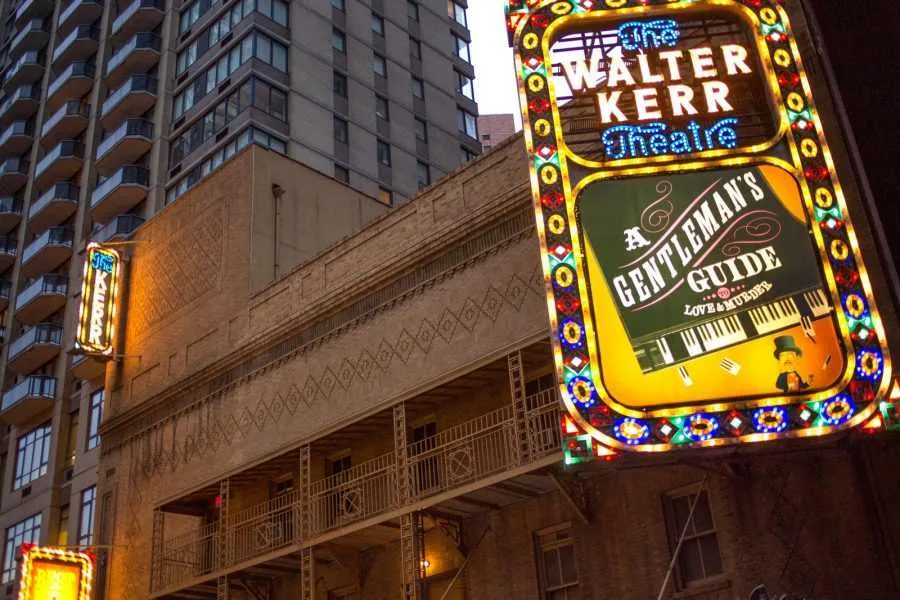 Broadway theater facades illuminated at night in Times Square, NYC
Broadway theater facades illuminated at night in Times Square, NYC
While tickets can sometimes be pricey, there are strategies to find more affordable options, like visiting the TKTS booth for same-day discounts or exploring rush ticket policies. It’s an essential New York experience that combines artistic excellence with the vibrant pulse of the city. For more ideas, consider exploring [what to do in nyc].
Metropolitan Museum of Art: A World Under One Roof
Often simply called “The Met,” the Metropolitan Museum of Art is a treasure trove of human creativity and history. Located on the edge of Central Park, it is the largest art museum in the United States and houses a staggering collection spanning 5,000 years of world culture. From ancient Egyptian temples and Roman sculptures to European masterworks and modern American art, The Met offers a journey through the history of civilization.
What to Eat in Fort Worth – A Culinary Deep Dive
11 Must-Visit places to go in nevada for Your 2025 Trip
12 Unforgettable Fun Things to Do in Vegas for Couples
What makes The Met one of the top tourist attractions nyc for culture enthusiasts is not just the quantity but the quality and breadth of its collection. You can spend hours wandering its halls, moving from one continent and era to another, witnessing the evolution of human expression. It’s a place where history, culture, and art intersect, offering endless opportunities for discovery.
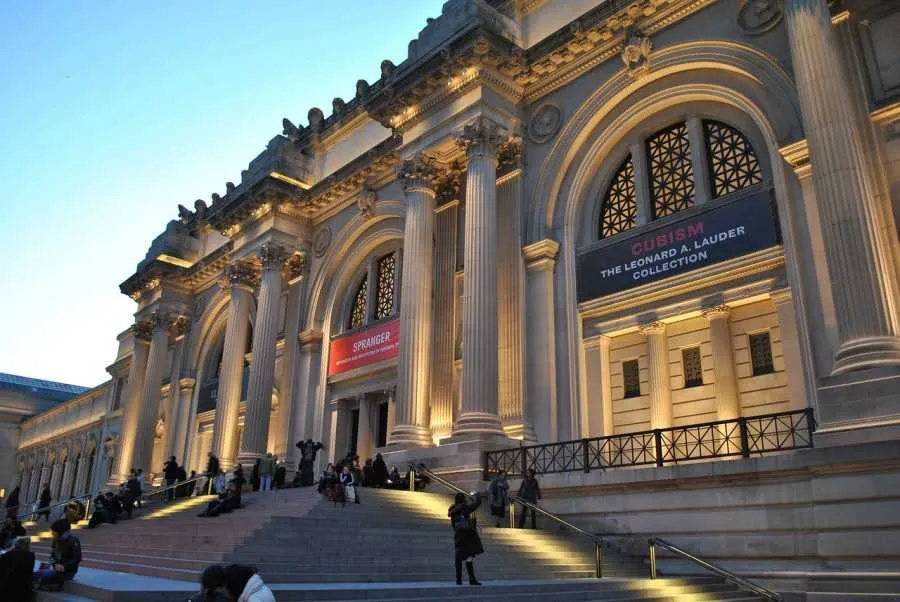 Exterior view of the Metropolitan Museum of Art building in New York City
Exterior view of the Metropolitan Museum of Art building in New York City
Exploring The Met isn’t just about looking at objects; it’s about connecting with the stories behind them, the lives of the artists, and the societies that created them. Whether you’re interested in fashion history, medieval armor, or impressionist paintings, there’s something here to captivate your imagination. It’s a key highlight for anyone deciding [what to visit in new york].
Architectural Wonders and Urban Design
Brooklyn Bridge: A Walk Between Worlds
Walking across the Brooklyn Bridge is an experience that combines architectural admiration with stunning panoramic views. Completed in 1883, it was an engineering marvel of its time, the first steel-wire suspension bridge. Connecting Manhattan and Brooklyn, it offers a beautiful perspective on the New York skyline and the East River.
Starting your walk from the Brooklyn side towards Manhattan provides the best views of the city skyline unfolding before you. The pedestrian walkway is elevated above the traffic, offering a relatively peaceful stroll amidst the urban buzz. It’s a simple yet profound way to experience the scale and beauty of New York City.
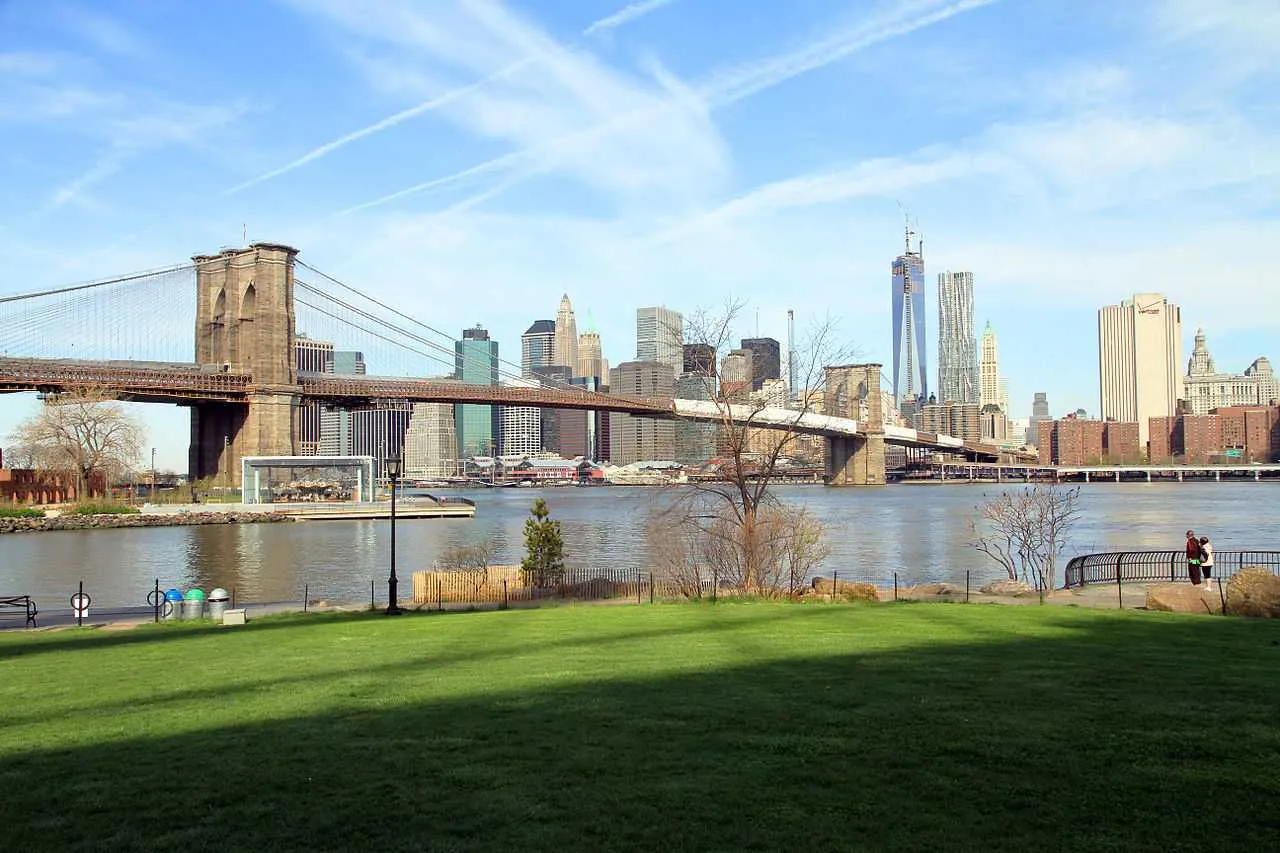 Brooklyn Bridge Park with the Manhattan skyline in the background
Brooklyn Bridge Park with the Manhattan skyline in the background
As you walk, observe the intricate cable work and stone towers. Think about the incredible effort and vision required to build this bridge over a century ago. It stands as a testament to human ingenuity and remains a beloved icon. This walk is definitely one of the [best tourist places in new york] for unique photo opportunities and a sense of accomplishment. Sunset walks offer an especially magical experience as the city lights begin to twinkle.
Observation Decks: Seeing the City from Above
New York’s skyline is legendary, and seeing it from above is a must-do experience. Several observation decks offer distinct perspectives, making them quintessential top tourist attractions nyc for capturing the city’s grandeur.
- Empire State Building: The classic, historic view from an Art Deco icon.
- Top of the Rock (Rockefeller Center): Offers unobstructed views of Central Park and includes the Empire State Building in its vista.
- One World Observatory: Located at the top of the Western Hemisphere’s tallest building, offering incredible views of Lower Manhattan, the harbor, and beyond.
- Edge (Hudson Yards): A unique, outdoor cantilevered platform offering thrilling views, making you feel like you’re walking on air.
Choosing one depends on your preference and what you want to see. Each offers a different angle on the city’s topography and architectural diversity.
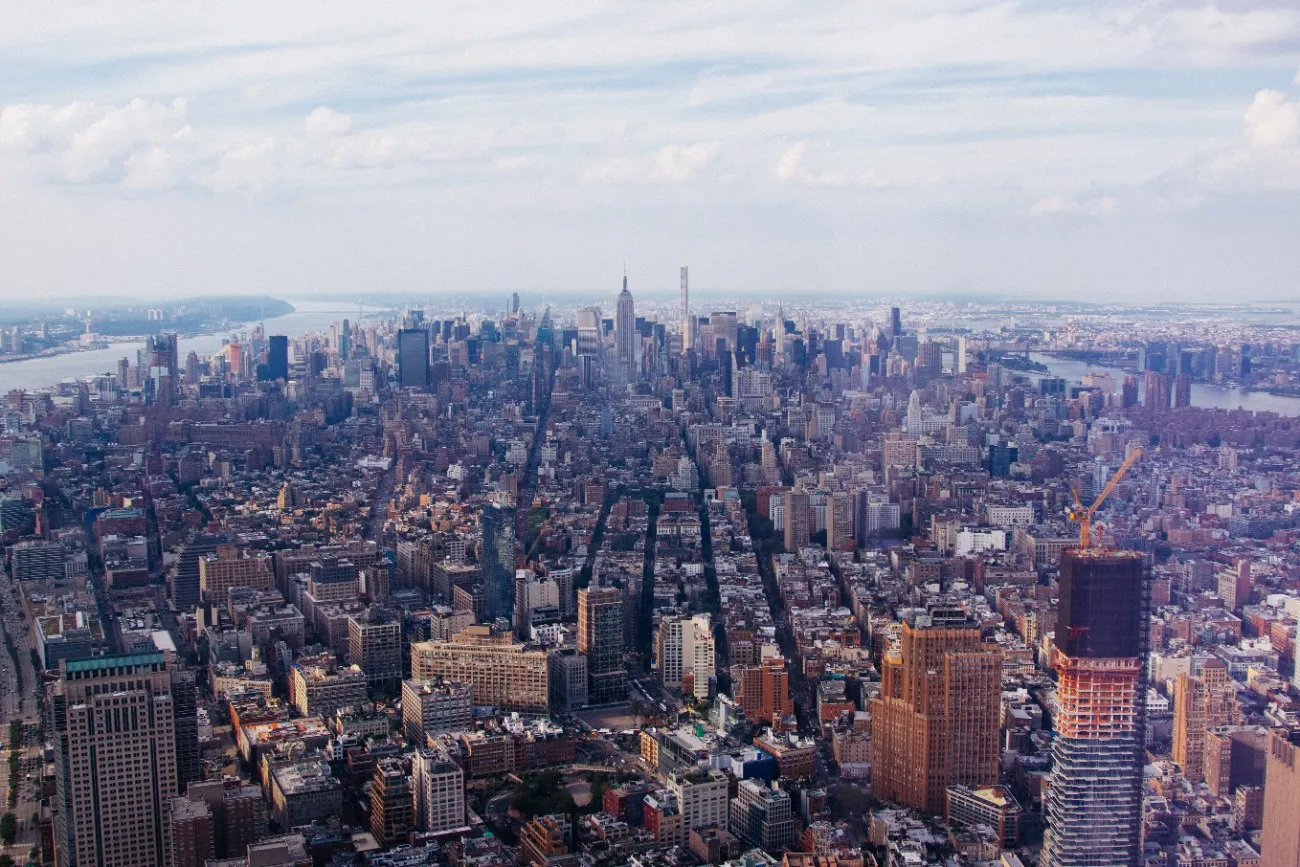 View from the One World Observatory looking out over Lower Manhattan and the harbor
View from the One World Observatory looking out over Lower Manhattan and the harbor
Going up to an observation deck isn’t just about the view; it’s about gaining perspective on the sheer scale of the city and its intricate layout. It helps visitors understand how different neighborhoods connect and how the city’s development has shaped its landscape. It offers a bird’s-eye view of many [new york most famous places].
Grand Central Terminal: More Than Just a Train Station
Grand Central Terminal is often described as one of the most beautiful buildings in New York, and for good reason. Beyond being a major transportation hub, it is an architectural masterpiece and a vibrant public space. Opened in 1913, its Beaux-Arts design, soaring Main Concourse ceiling adorned with constellations, and grand facade are truly breathtaking.
Hundreds of thousands of people pass through Grand Central daily, yet amidst the rush, there’s an undeniable sense of history and elegance. The terminal has played a significant role in New York’s development, facilitating movement and connecting people from all walks of life.
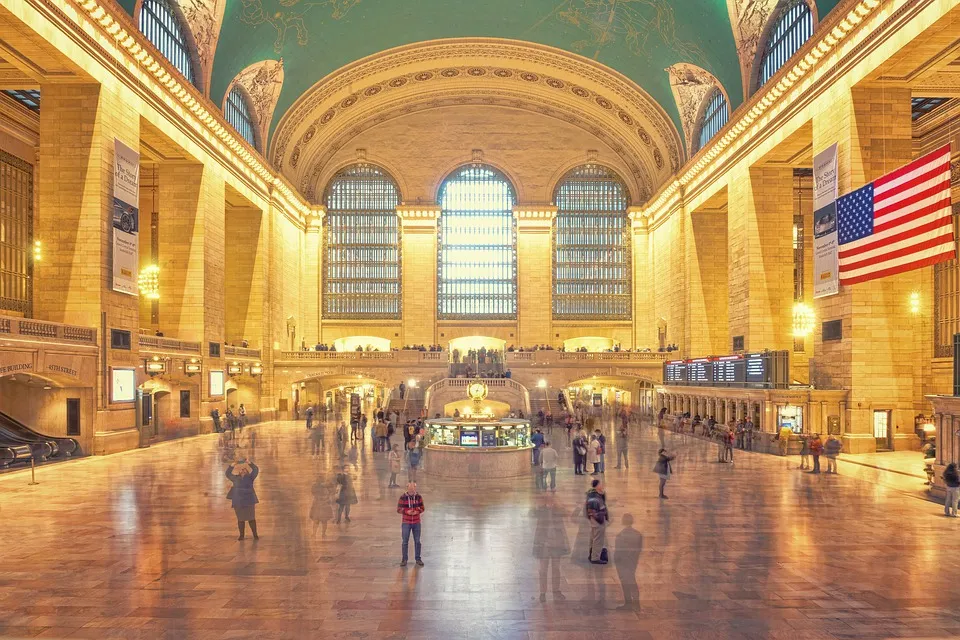 The Main Concourse at Grand Central Terminal showing the vaulted ceiling and crowd below
The Main Concourse at Grand Central Terminal showing the vaulted ceiling and crowd below
Take a moment to stand in the center of the Main Concourse, look up at the ceiling, and soak in the atmosphere. The Whispering Gallery near the Oyster Bar is a fun, hidden architectural quirk. Grand Central is a living piece of history, a place where the past and present converge in a stunning display of urban design.
The High Line: An Elevated Oasis
The High Line is a relatively new addition to the list of top tourist attractions nyc offers, but it quickly became a local and visitor favorite. This public park was built on a historic freight rail line elevated above the streets on Manhattan’s West Side. It runs from Gansevoort Street in the Meatpacking District to 34th Street, offering unique views of the city, public art installations, and carefully curated gardens.
The transformation of this industrial relic into a green space is a brilliant example of urban revitalization. Walking the High Line provides a different perspective on the surrounding neighborhoods, showcasing the blend of old and new architecture. It’s a peaceful retreat above the city bustle, especially pleasant on a nice day.
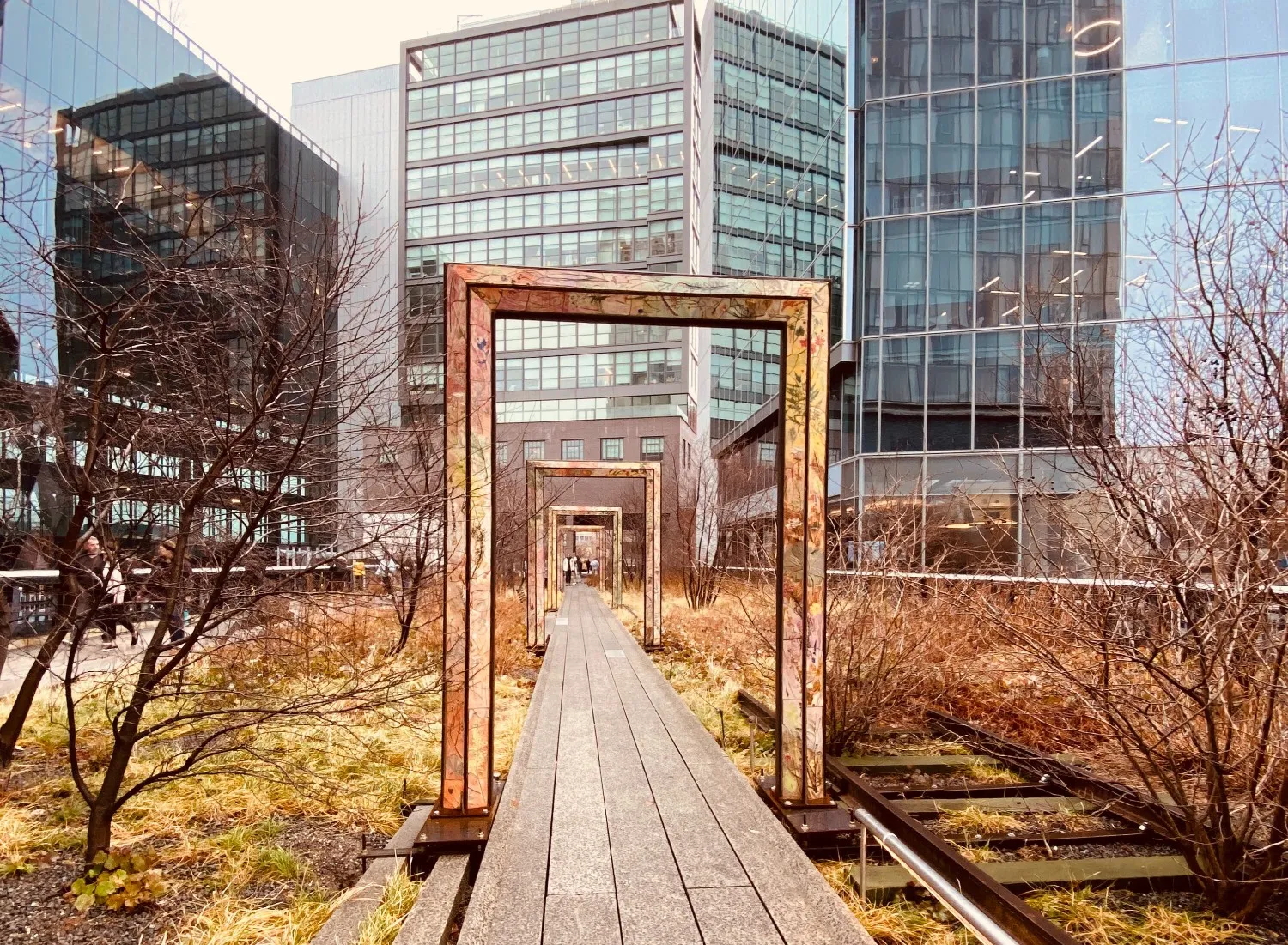 View looking down the High Line park path with buildings and greenery
View looking down the High Line park path with buildings and greenery
The High Line is a testament to creative urban planning and community effort. It offers a unique walking experience, connecting you with nature, art, and architecture in an unexpected setting. It’s a fantastic place to stroll, relax, and observe the city from a new vantage point. This unique park is certainly one of the [best tourist places in new york] for a leisurely afternoon.
Neighborhoods Rich in Culture and History
Little Italy and Chinatown: A Culinary and Cultural Blend
New York City’s diversity is one of its greatest strengths, nowhere more evident than in the vibrant, distinct neighborhoods of Little Italy and Chinatown. Located adjacent to each other in Lower Manhattan, they offer a fascinating cultural juxtaposition.
Little Italy, centered around Mulberry Street, is a historic enclave that, while smaller than it once was, still retains a distinct Italian-American flavor, especially in its restaurants, bakeries, and annual street festivals. The aroma of garlic and tomato sauce fills the air, inviting you to sample classic Italian-American dishes.
Just a few blocks south, crossing Canal Street plunges you into the sensory wonderland of Chinatown. This is one of the largest and oldest Chinese communities outside of Asia. The streets are alive with bustling markets, diverse culinary options ranging from dim sum to Sichuan, traditional medicine shops, and vibrant cultural energy.
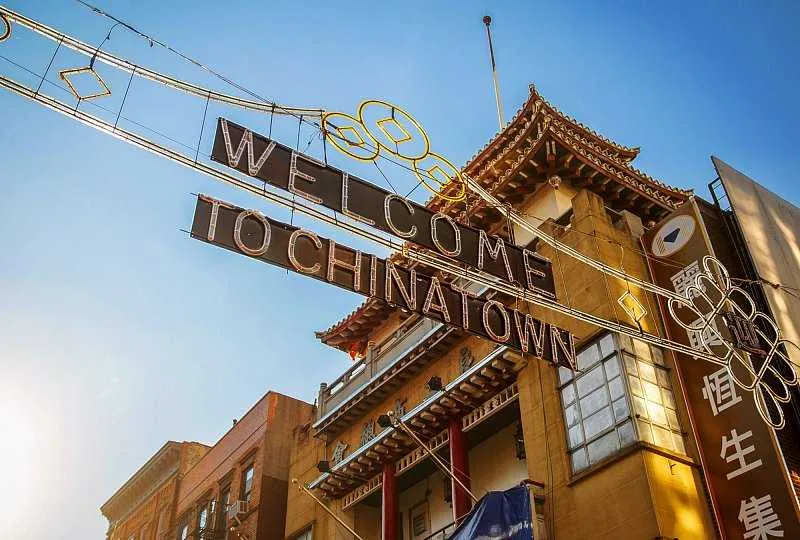 Sign welcoming visitors to Chinatown, NYC
Sign welcoming visitors to Chinatown, NYC
Exploring these neighborhoods side-by-side highlights New York’s incredible ability to accommodate and celebrate distinct cultural identities. The food here is more than just sustenance; it’s a link to heritage, tradition, and community. Sampling authentic dishes in Chinatown or enjoying a classic pastry in Little Italy are experiences that connect you directly to the immigrant stories that shaped these areas. It’s a must for anyone exploring [what to visit in new york].
Financial District: The Heart of History and Commerce
The Financial District, or FiDi as locals call it, is often associated solely with Wall Street and global finance. However, this neighborhood in Lower Manhattan is steeped in history, being the birthplace of New York City itself (as New Amsterdam) and the early American government. Exploring FiDi is like walking through layers of history, from its colonial past to its modern role as a financial powerhouse.
Key landmarks here include the New York Stock Exchange, the Charging Bull statue (a symbol of financial optimism), Federal Hall (where George Washington was inaugurated), Trinity Church (with its historic graveyard), and Battery Park, offering views of the harbor.
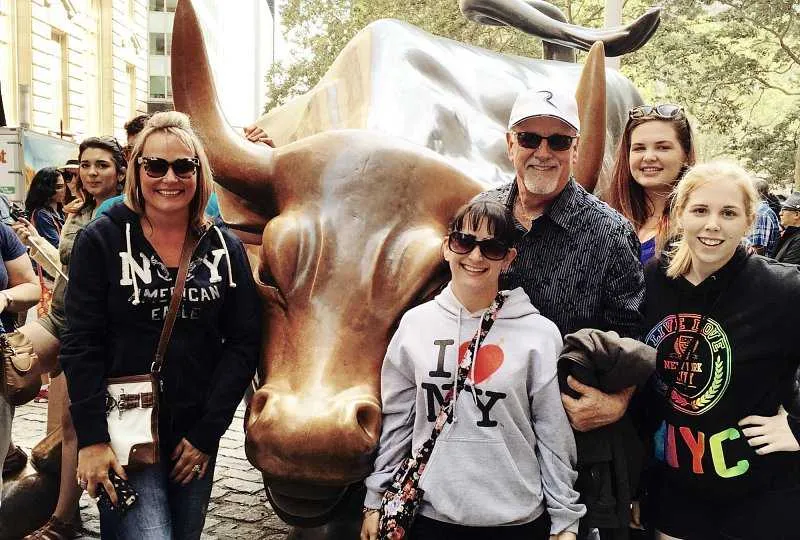 Father, mother, and three daughters standing near the Charging Bull statue in the Financial District, NYC
Father, mother, and three daughters standing near the Charging Bull statue in the Financial District, NYC
Beyond the skyscrapers, look for hidden gems like Stone Street, a cobblestone alley reminiscent of the area’s Dutch origins, now lined with lively restaurants and bars. The mix of historic buildings and gleaming modern towers tells the story of New York’s continuous evolution. It’s a fascinating area for anyone interested in history, economics, and the city’s foundations. It’s certainly one of the [best tourist places in new york] for a dose of history and architecture.
Greenwich Village, SoHo, and West Village: Artistic Soul and Local Charm
These adjacent neighborhoods in Lower Manhattan offer a different, perhaps more intimate, New York experience compared to the Midtown crowds. They are known for their tree-lined streets, charming brownstones, independent boutiques, cafes, and a rich history as centers for artistic movements, counterculture, and music.
- Greenwich Village: Historically the heart of the Beat Generation and the 1960s counterculture, it’s famous for Washington Square Park, legendary jazz clubs, comedy venues, and a bohemian spirit.
- SoHo (South of Houston Street): Known for its cast-iron architecture and upscale shopping, it evolved from an industrial area to an artists’ haven and now a fashionable district.
- West Village: Often considered one of the most picturesque neighborhoods, with winding streets, cozy restaurants, and a relaxed, residential feel.
Exploring these areas allows you to experience New York life beyond the major landmarks. It’s about wandering down charming streets, discovering hidden courtyards, enjoying diverse culinary scenes, and soaking in the creative energy that still lingers.
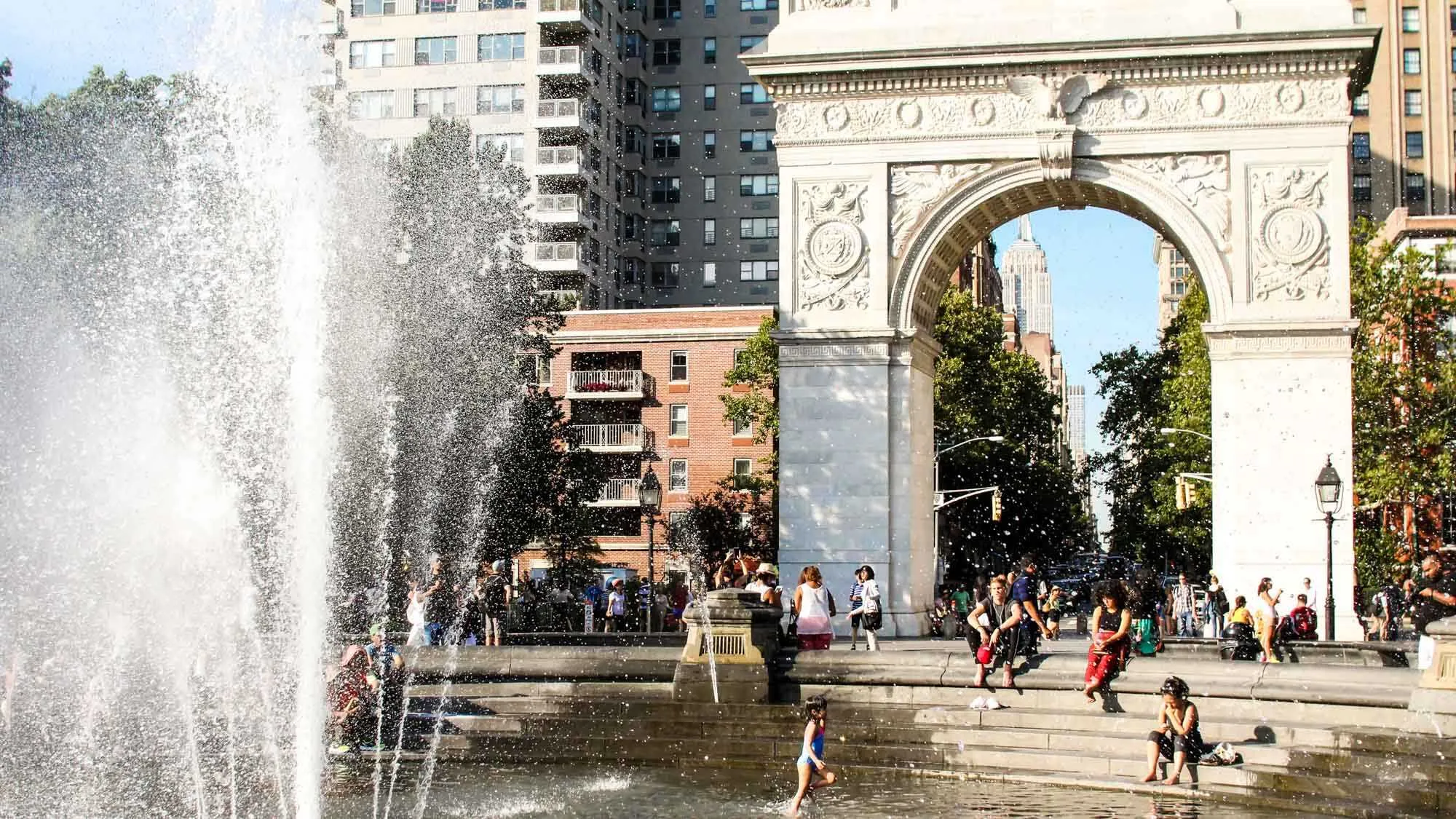 Fountain and arch at Washington Square Park in Greenwich Village, New York
Fountain and arch at Washington Square Park in Greenwich Village, New York
From exploring independent bookstores in the Village to shopping in SoHo boutiques or enjoying a quiet meal in the West Village, these neighborhoods offer a taste of local New York life and are filled with unique experiences that make them essential [what to do in nyc] destinations. They represent the diverse cultural tapestry that makes New York City so unique.
Reflecting on Resilience
9/11 Memorial & Museum: A Place of Remembrance and Resilience
The events of September 11, 2001, left an indelible mark on New York City. The 9/11 Memorial & Museum at Ground Zero is a place for reflection, remembrance, and honoring the lives lost. It is a powerful, somber, yet ultimately moving experience that highlights the resilience of the city and its people.
The memorial features two reflecting pools set in the footprints of the original Twin Towers, with the names of the victims inscribed around the edges. Water cascades endlessly into the pools, creating a sense of peace and contemplation amidst the surrounding urban landscape.
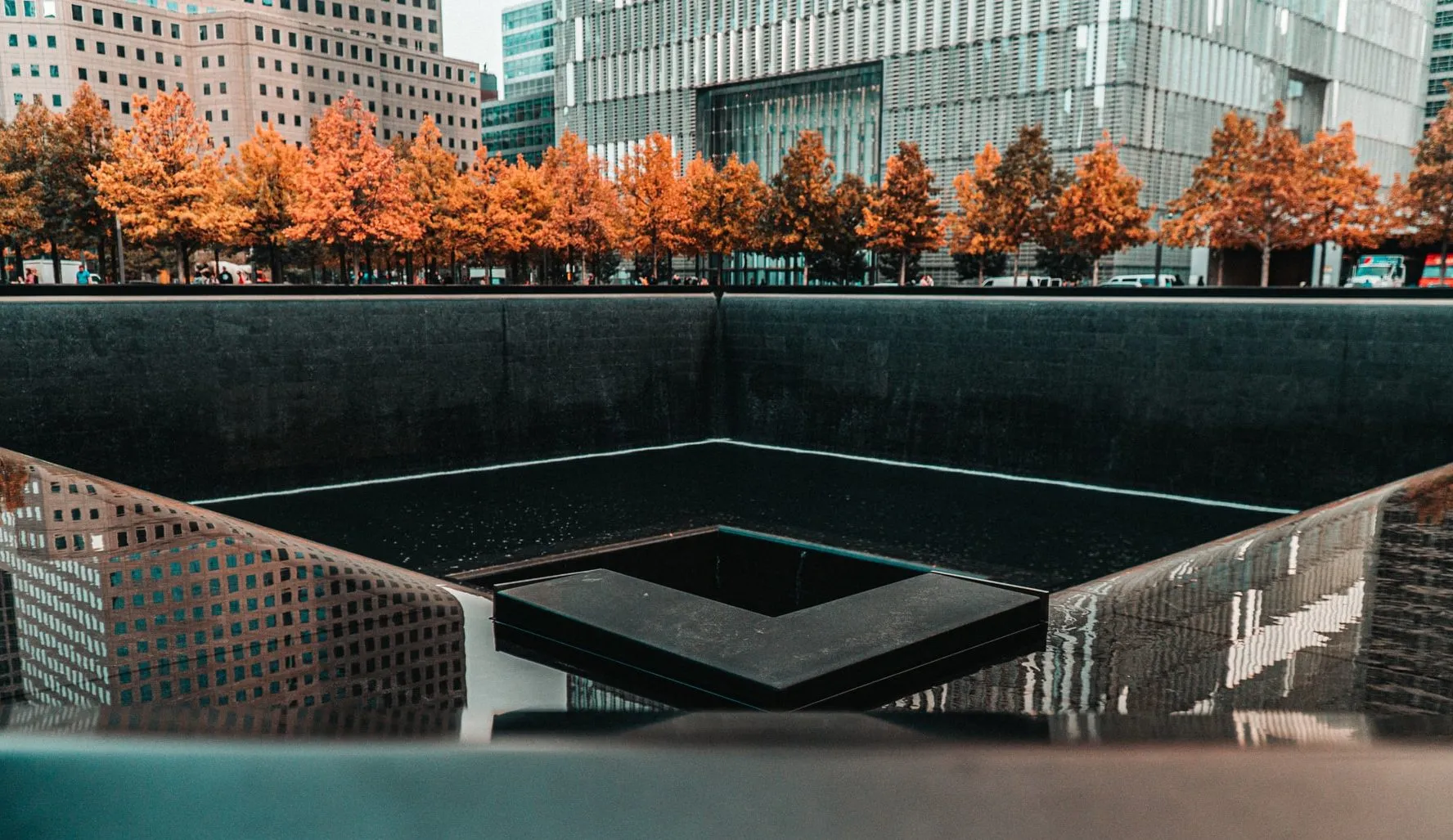 9/11 Memorial fountain at Ground Zero, NYC
9/11 Memorial fountain at Ground Zero, NYC
The adjacent museum delves deeper into the events of that day and its aftermath through artifacts, personal stories, and multimedia exhibits. While emotionally challenging, it provides essential historical context and a testament to the human spirit’s capacity for courage and recovery. Visiting the memorial and museum is a significant part of understanding modern New York City and is a key site among the [top tourist attractions nyc] for historical importance. It’s a place to remember, reflect, and witness the city’s strength. For those planning [what to visit in new york], including this site offers a crucial historical perspective.
Green Spaces and Urban Escapes
Central Park: New York’s Backyard
Central Park is Manhattan’s sprawling green heart, a meticulously designed urban oasis that offers respite from the concrete jungle. More than just a park, it’s a vital part of New York life, where people come to relax, play, exercise, and connect with nature and each other.
Designed by Frederick Law Olmsted and Calvert Vaux, the park is a masterpiece of landscape architecture, featuring winding paths, lakes, ponds, rolling lawns, and formal gardens. Popular spots include The Mall and Literary Walk, Strawberry Fields (a memorial to John Lennon), Bethesda Terrace and Fountain, Sheep’s Meadow, and the Conservatory Garden.
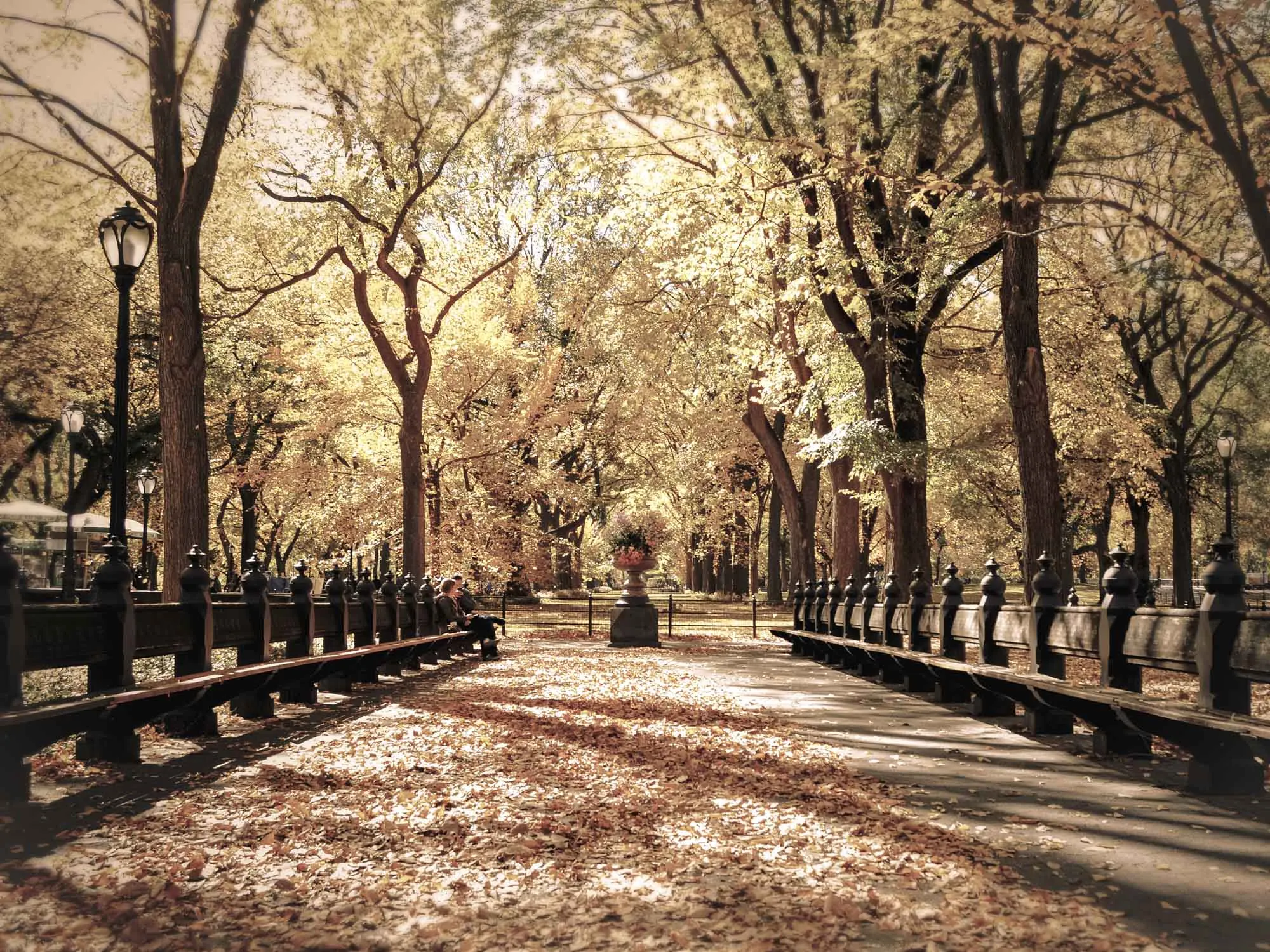 The Mall, a wide pedestrian walkway lined with trees, in Central Park, NYC
The Mall, a wide pedestrian walkway lined with trees, in Central Park, NYC
Central Park is a place for all seasons, offering ice skating in winter, cherry blossoms in spring, sunbathing in summer, and vibrant foliage in autumn. It’s where you see New Yorkers being New Yorkers – jogging, picnicking, playing chess, or simply enjoying a quiet moment on a bench. Visiting Central Park is an essential experience for understanding the rhythm of life in the city. It’s undeniably one of the [top tourist attractions nyc] residents and visitors cherish. For ideas on [what to do in nyc for a day], spending time exploring different corners of Central Park is a wonderful option.
Beyond the List: The Enduring Spirit of NYC
This list covers some of the top tourist attractions nyc is famous for, but it’s just a starting point. New York City is a place of constant discovery. Its energy, its history, its incredible mix of cultures, and its ever-evolving landscape offer endless opportunities for exploration. From hidden culinary gems tucked away in diverse neighborhoods to smaller museums, vibrant street art, and local festivals, there’s always something new to uncover.
Whether you’re drawn to the historical significance of Ellis Island, the artistic magic of Broadway, the cultural tapestry of its ethnic enclaves, or the peaceful escape of Central Park, New York promises experiences that are both grand and intimately personal. It’s a city that challenges, inspires, and captivates.
Exploring the intersection of history, culture, and everyday life is the best way to truly know New York. Don’t just see the sights; try to live the culture, taste the history in its food, and feel the pulse of the city. This is what makes visiting the top tourist attractions nyc truly unforgettable. Plan your trip, step out, and let New York reveal its many wonders to you. If you’re still deciding [what to visit in new york], consider combining these famous spots with lesser-known local favorites for a truly comprehensive trip.
Frequently Asked Questions About Top Tourist Attractions in NYC
Q: What are the absolute must-see top tourist attractions NYC has for first-time visitors?
A: For a first visit, essential spots include the Statue of Liberty/Ellis Island, Central Park, an observation deck (like Top of the Rock or Empire State Building), Times Square/Broadway, and walking the Brooklyn Bridge. These cover iconic symbols, green space, views, entertainment, and historical architecture.
Q: How many days do I need to see the top tourist attractions NYC offers?
A: To visit several of the major attractions and get a good feel for the city, a minimum of 3-5 days is recommended. This allows time to explore different neighborhoods and not rush through the major sites. For a quick visit, focusing on [what to do in nyc for a day] is key, selecting 2-3 geographically close attractions.
Q: Is it better to buy tickets for top tourist attractions NYC in advance?
A: Yes, it is highly recommended, especially for popular attractions like observation decks, museums (like The Met), and the Statue of Liberty ferry. Buying in advance saves time by allowing you to skip ticket lines and often guarantees entry on your desired date and time.
Q: What is the best way to get around to see the top tourist attractions NYC?
A: The New York City subway system is the most efficient and cost-effective way to travel between different areas and attractions. Walking is also essential for exploring neighborhoods like Greenwich Village, SoHo, Chinatown, and Little Italy. Taxis and ride-sharing services are available but can be expensive and slow in traffic.
Q: Are any of the top tourist attractions NYC free to visit?
A: Yes, several are free! Walking the Brooklyn Bridge, strolling through Central Park, walking the High Line, and visiting the 9/11 Memorial (the outdoor pools) are free. While museums often have admission fees, some offer free or pay-what-you-wish hours or days (check their specific policies). Exploring many neighborhoods is also free.
